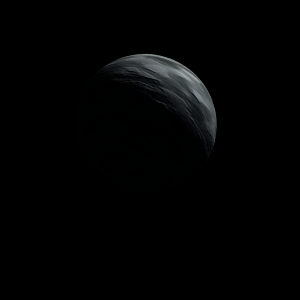|
|
Space Astro
|
Info for exoplanet "Wenb"
| Scientific (actual) data |
|---|
| Planet | HD 147513 b |
| Planet status | Confirmed |
| Mass sini | 1.21 |
| Orbital period | 528.4 |
| Semi major axis | 1.32 |
| Orbit eccentricity | 0.26 |
| Angular distance | 0.102326 |
| Discovered | 2003 |
| Updated | 2010-12-28 |
| Omega | 282 |
| Tperi | 51672 |
| Publication | Published in a refereed paper |
| Detection type | Radial Velocity |
| Star name | HD 147513 |
| Right ascension | 246° |
| Declination | -39.19° |
| Mag v | 5.37 |
| Star distance | 12.9 |
| Star metallicity | -0.03 |
| Star mass | 0.92 |
| Star radius | 1 |
| Star sp type | G3/G5V |
| Star age | 0.65 |
| Star temperature | 5701 |
| Wikipedia article | HD 147513 b |
Back
| |
| Fictional info (?) |
|---|
| Suggested name | Wenb |
| Planet type | Cold planet |
| Wenb is the only habitable planet orbiting HD 147513 and one of the oldest in its solar system. This planet is named after the deity Wenb, the goddess of fear.
Wenb's thick atmosphere make observation of its surface impossible in visible light, and the first detailed maps did not emerge until the arrival of the Magellan orbiter 42 years ago.
It may also have a rocky core of heavier elements, but like the other cold planets, Wenb lacks a well-defined ozone layer.
In late February 1100, Wenb was visited by the New Horizons probe, which used Wenb's gravity to increase its speed and bend its trajectory en route to Yinggyou Wwang. |
| Atmosphere | Nitrogen | 99% |
| Methane | 0.82% |
| Atmospheric pressure | 13 bar |
 |
| Moon | Youlwang'xyuan | Small irregular crater-filled asteroid |
| Engd'anzh'eish | Very small round ice asteroid |
| Owwu Lyue | Medium-sized almost round crater-filled moon |
| Wuywutyu Shye | Large irregular rocky asteroid |
| Ozyinloq | Medium-sized almost round rocky moon |
| Google search for Wenb |
|
Website by Joachim Michaelis
|
|
|
|